COMSOL has the best multiphysical simulation capabilities in my experience. Technical support from Elisa at TECHNIC as well as the engineers at COMSOL has been great.
COMSOL is an important part of our research in plasma physics. We use it in the design of plasma systems and it helps us to obtain a greater understanding of the underlying physics. We have always valued the quick support from TECHNIC and COMSOL and it has been a pleasure to work with them.
Comsol has become a valuable part of our design and decision making process. The exceptional flexibility and access to the physics and solvers in Comsol has allowed us to have deeper understanding on thermomechanical solutions. Technic and Comsol have always been quick and helpful to resolve any issues and provide helpful advice on their products.
At Scion we use COMSOL Multiphysics to understand energy processes, such as the interplay of non-linear solid mechanics and heat & mass transfer during biomass compaction, to design new or more efficient processes.
We use COMSOL Multiphysics to design the customised muffler. With it, we can simulate the insertion loss at different spectrum with different muffler designs.
A composite material is a heterogeneous material composed of two or more integrated constituents for enhanced structural performance. Thanks to the improved strength and reduced weight as compared to conventional materials, composite materials have many potential use cases in diverse fields. Development efforts are underway in industry to embed functionality like sensing, actuation, computation, and communication into composite materials known as smart composite materials. A thorough understanding of the behavior of such materials is necessary in order to design the most accurate and reliable composite structures.
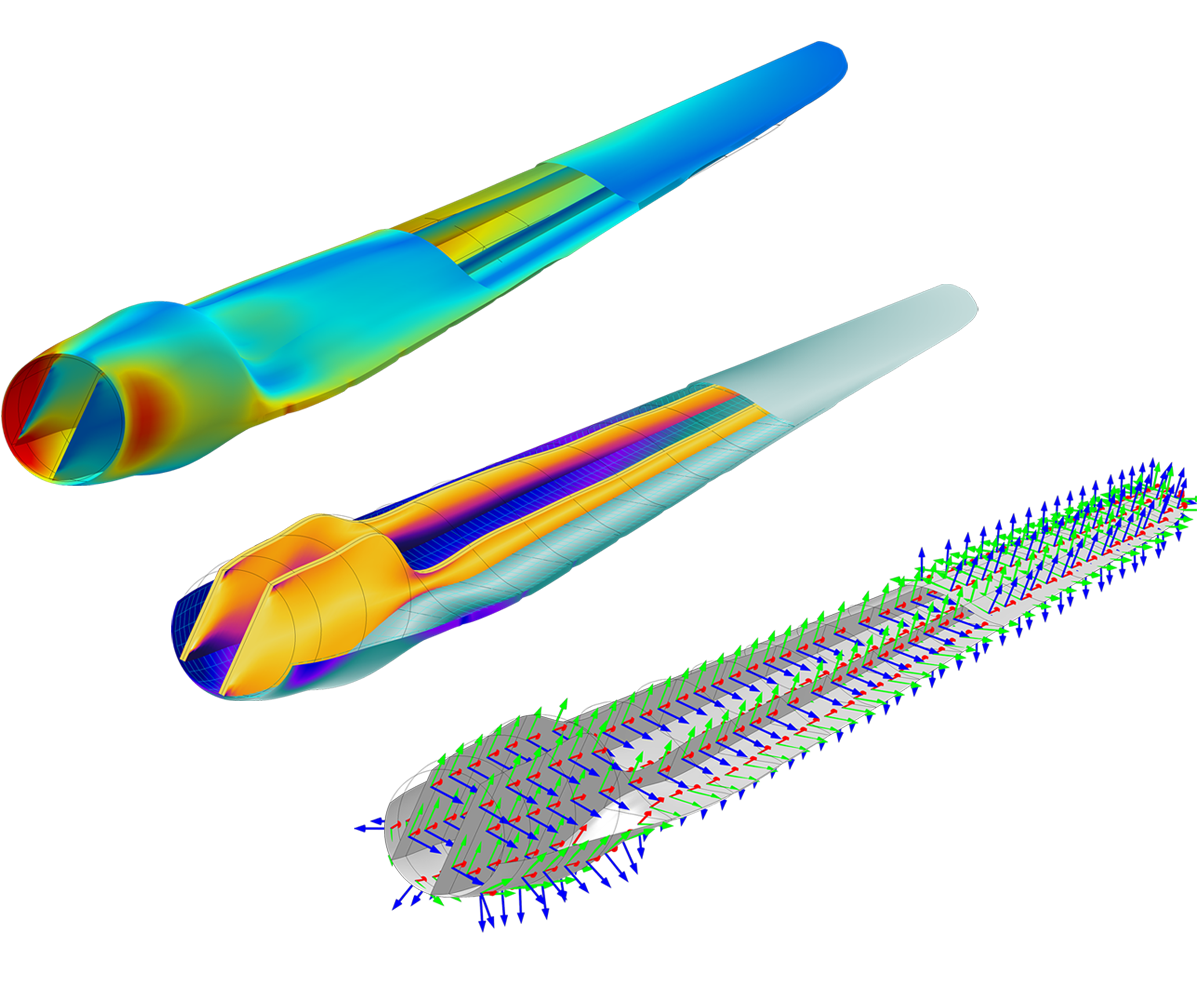
The Composite Materials Module is an add-on to the Structural Mechanics Module that brings you modelling tools and functionality tailored for analysing layered composite structures. Some of the common examples of layered composite materials are fiber-reinforced plastic, laminated plates, and sandwich panels. These layered composite materials are widely used in manufacturing aircraft components, spacecraft components, wind turbine blades, automobile components, buildings, boat hulls, bicycles, and safety equipment. The Composite Materials Module utilises specialised Layered Material technology and provides two approaches that you can use to accurately model composite shells: layerwise theory and equivalent single layer theory.
Additionally, when you combine the Composite Materials Module with other modules from the COMSOL® product suite, you can extend your models to include heat transfer, electromagnetics, and fluid flow effects — all within the same simulation environment.
The Structural Mechanics Module provides predefined physics interfaces with specialised settings to more easily set up and run analyses. The Composite Materials Module includes additional interfaces and material models to simulate composite laminates, depending on which layer theory you prefer and the type of analysis you are running. Along with the regular structural analyses (such as stationary, eigenfrequency, transient, linear buckling, and other analyses), you can also perform first-ply failure and multiscale modelling. Since they are engineered materials, the composite laminates are prone to different kinds of failure modes. Thus, it becomes essential to perform various kinds of failure analyses for composite laminates.
Note that you can also optimise the geometric dimensions, composite layup, ply thicknesses, fiber orientations, and material properties of your designs with the add-on Optimisation Module.
View more details on what you can model with the Composite Materials Module below.
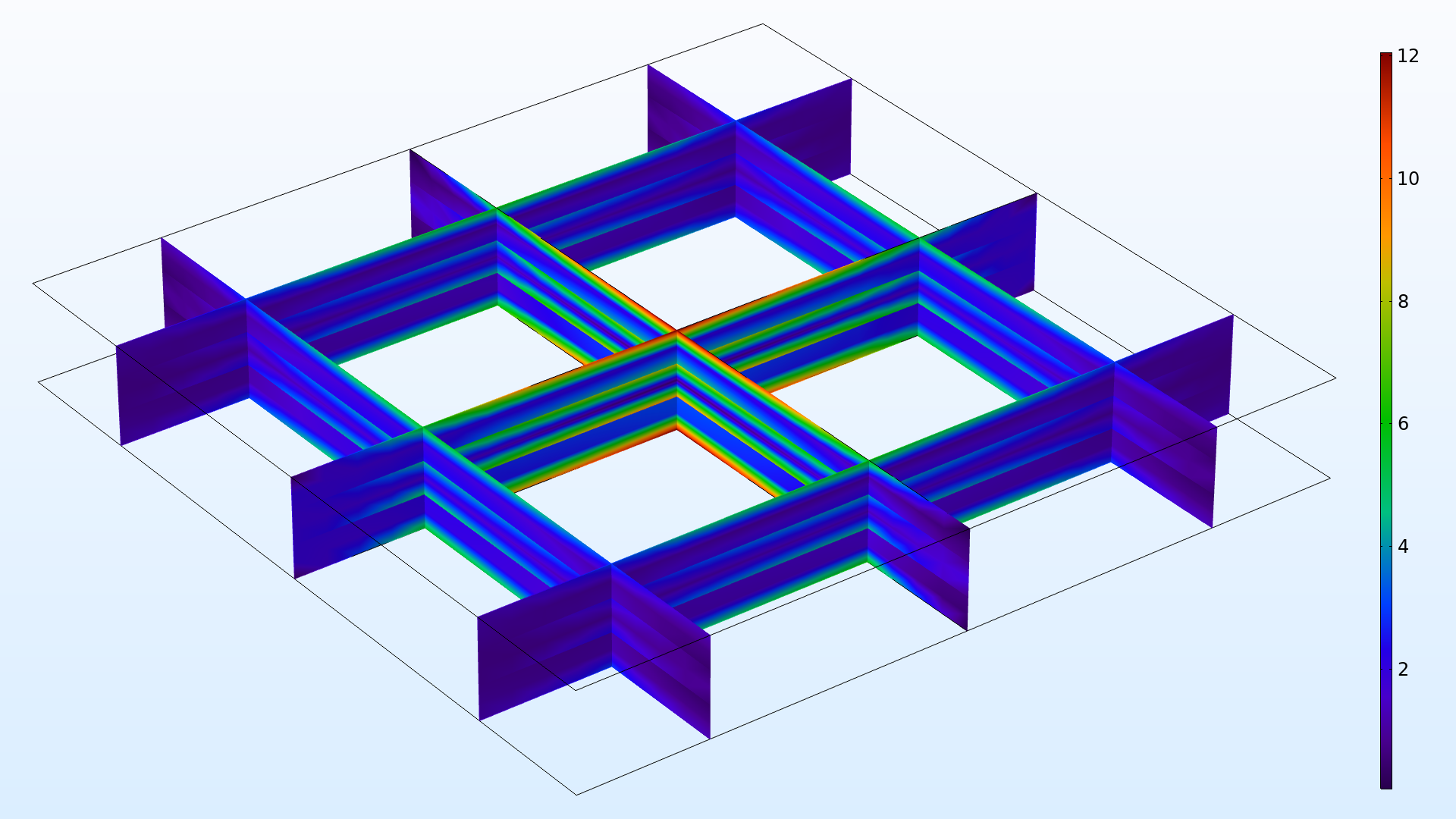
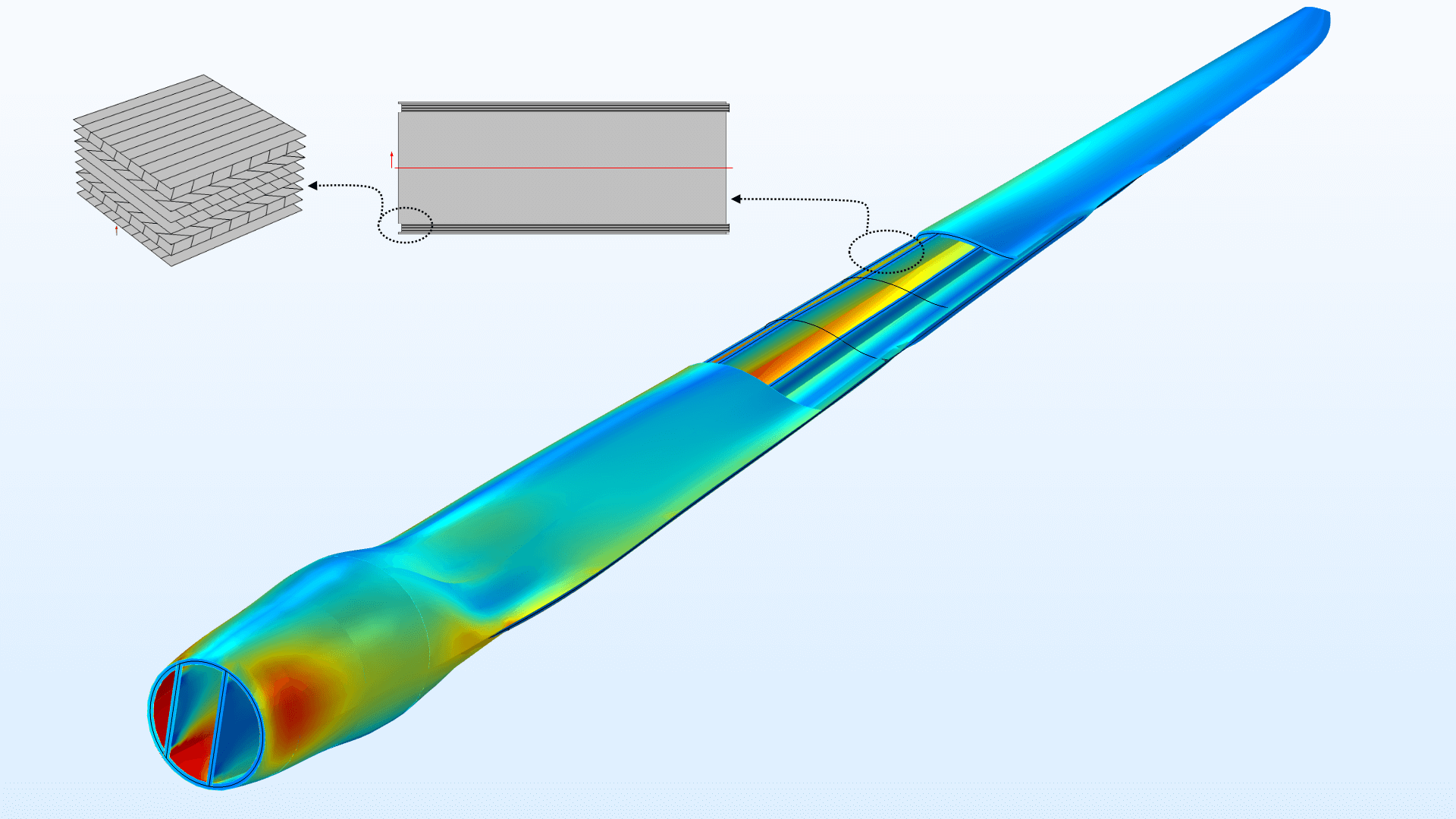
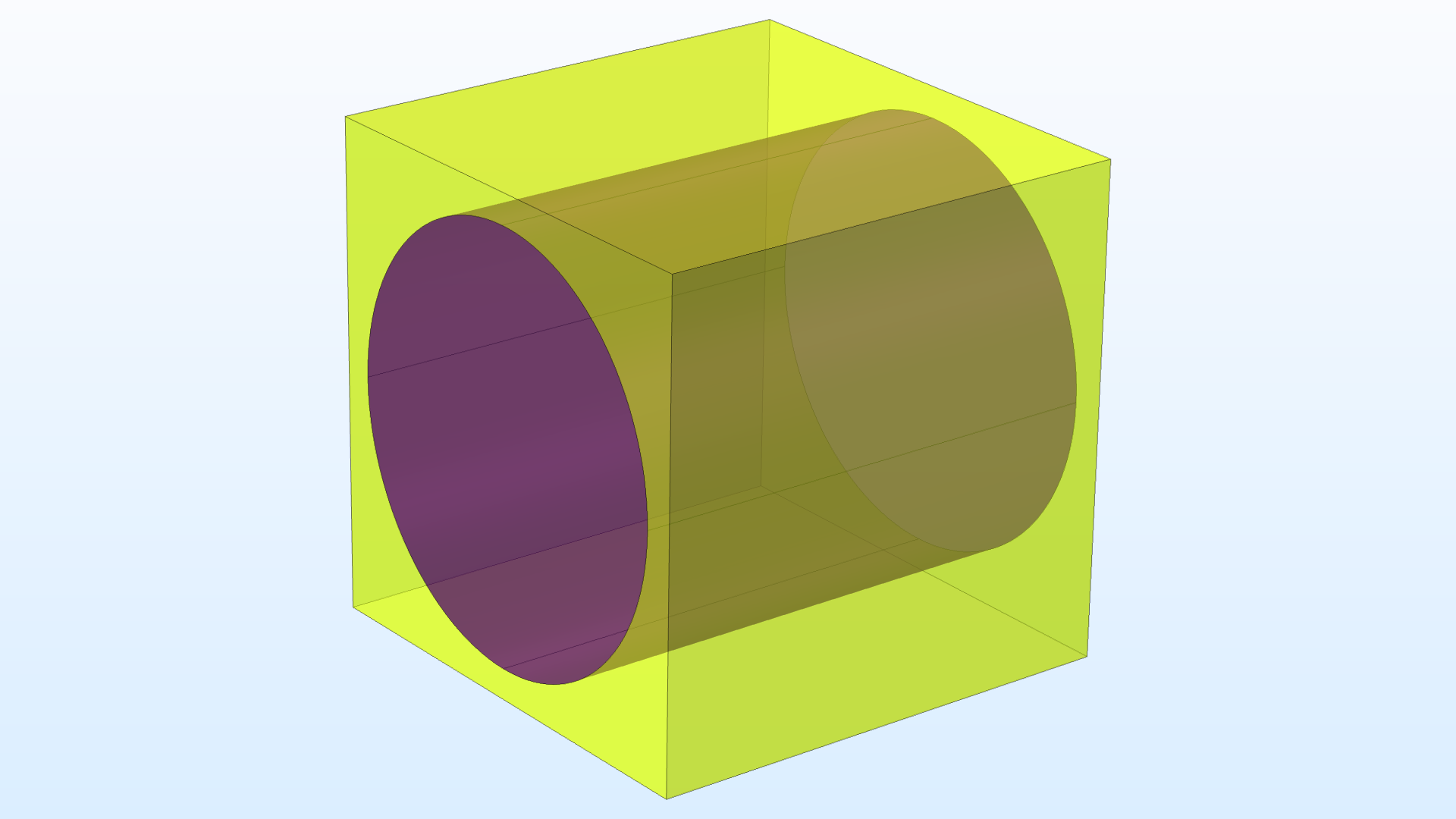
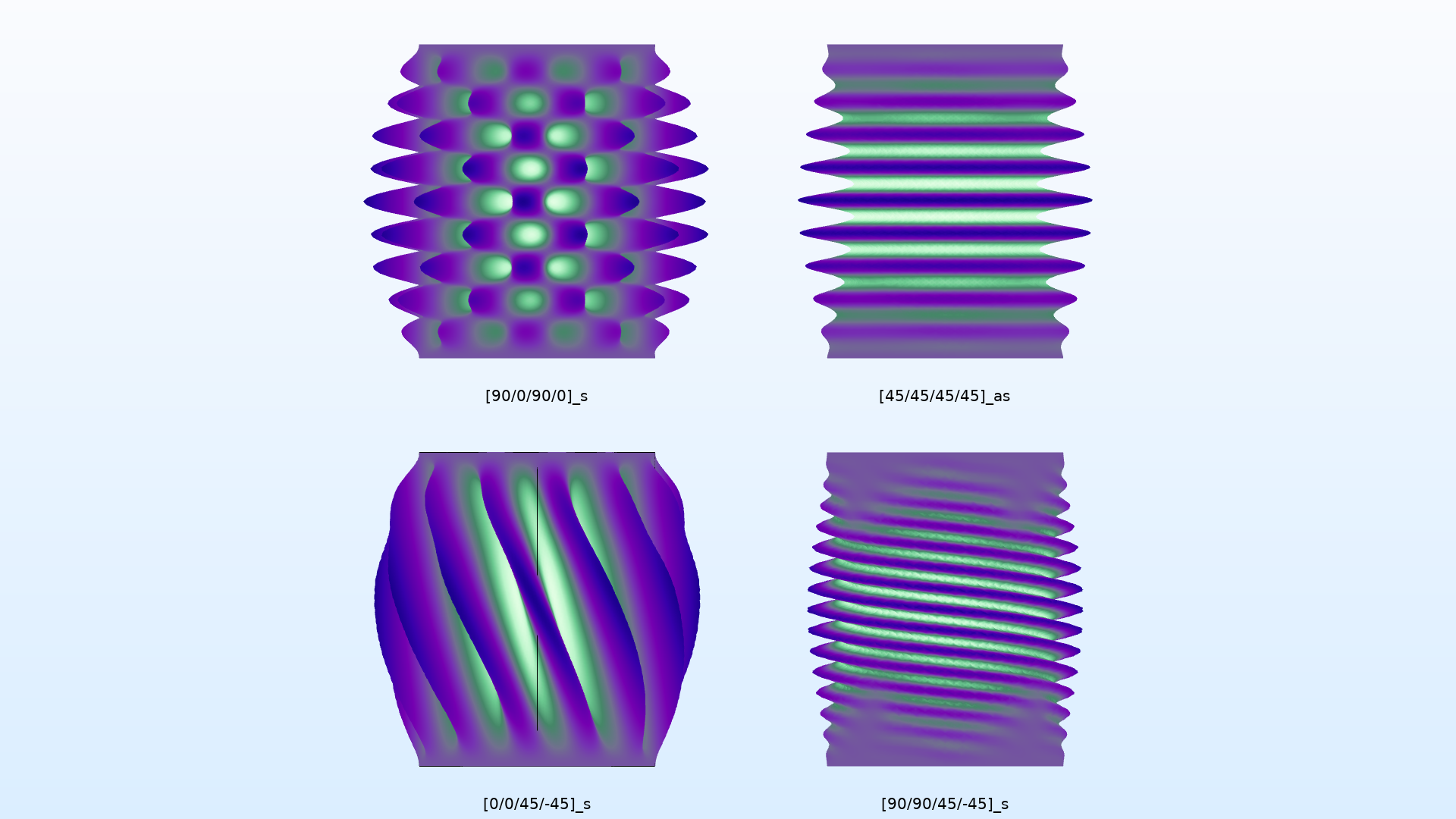
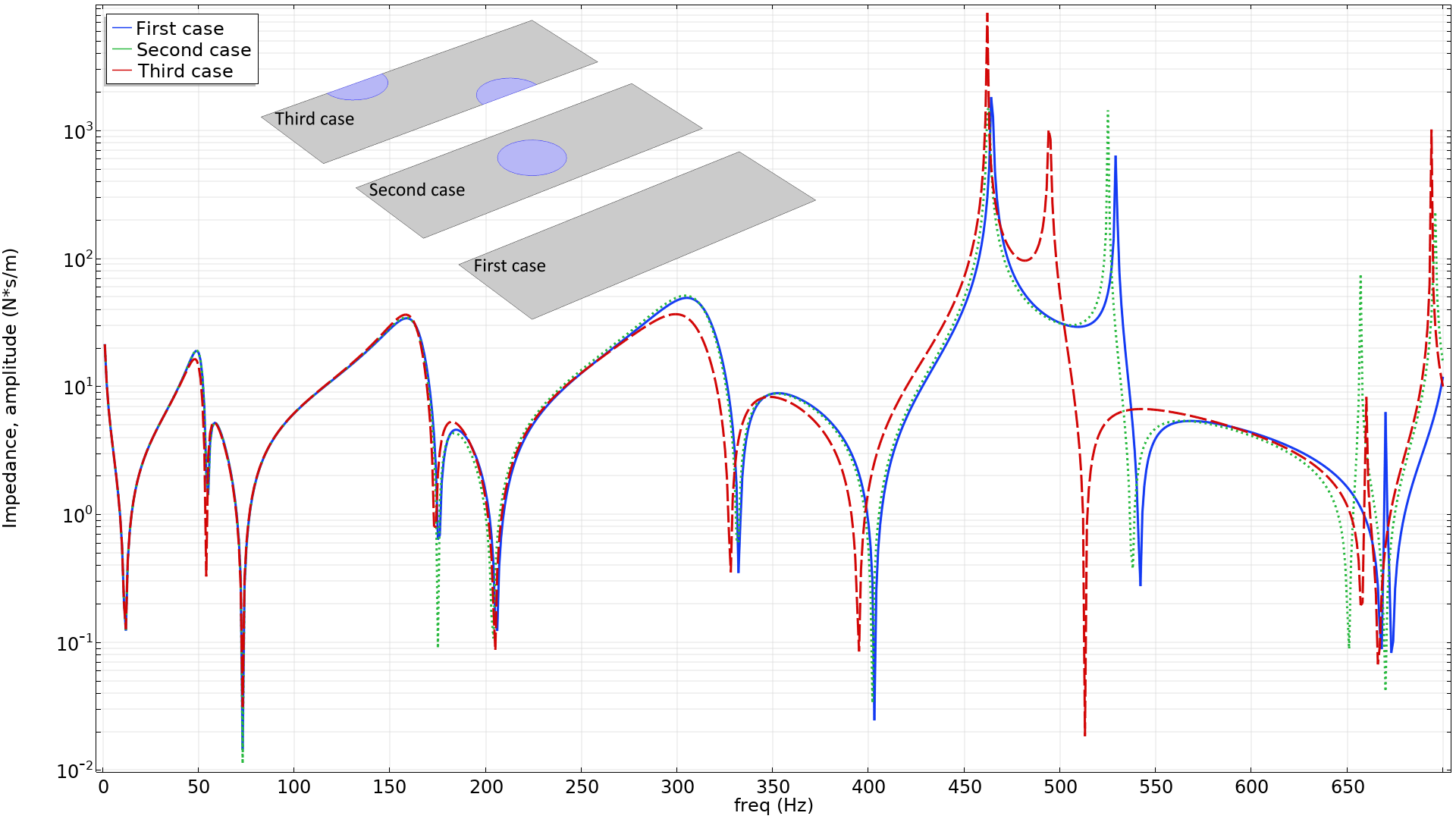
The Layered Shell interface can incorporate nonlinear material models in a layered composite when used in combination with the Nonlinear Materials Module. It is also possible to add different nonlinear material models in different layers of a composite laminate.
The composite laminates, modeled using either the Layered Shell interface or the Layered Linear Elastic Material node of the Shell interface, can be coupled with other structural elements in a multibody system, when combined with the Multibody Dynamics Module.
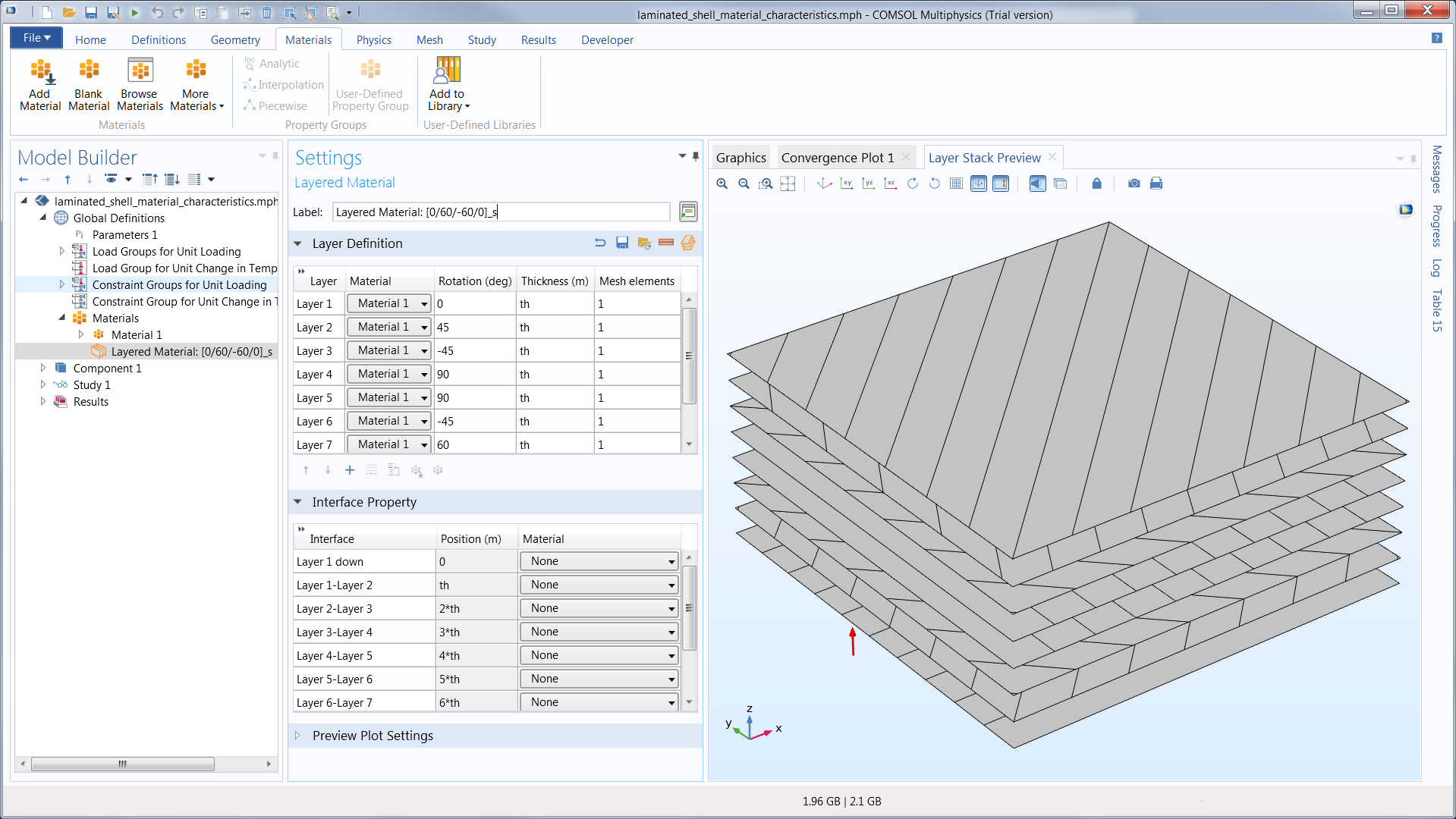
In many situations, a composite laminate is designed based on the structural requirements, but there are some cases where other physical phenomena must be taken into consideration. There are two fundamentally different types of interaction between the mechanics in the laminate and other processes: those that occur within the laminate layers and those that occur with the laminate as a boundary.
Some physical processes occur inside the laminate, where the thermal and electrical effects are significant, and it is important to design the laminate based on the combined response. The layered material technology allows you to use different physics interfaces in the same layered material, and you can solve for all of the physical phenomena simultaneously, including the couplings between them. From a structural design point of view, both laminate theories can be coupled to thermal and electrical modeling of composite laminates. One such example is Joule heating and thermal expansion of a composite laminate.
To access these multiphysics couplings, the Heat Transfer Module and AC/DC Module are required for the thermal and electromagnetic interactions, respectively.
In other physical processes, the laminate acts as a boundary for a 3D domain where something important occurs. The equivalent-single-layer-theory-based Layered Linear Elastic Material in the Shell interface allows you couple the composite laminate with a surrounding fluid using the Fluid-Structure Interaction multiphysics coupling node. This functionality is readily available for laminar flow, as well as turbulent flow when combined with the CFD Module.
Similarly, in order to model a vibroacoustics problem, you can couple the composite laminate with a surrounding acoustic domain using the Acoustics-Structure Boundary multiphysics coupling node, accessible when combined with the Acoustics Module.
Composite laminates are made up of several layers of different materials, fiber orientations, thickness, and so on. In order to visualise the layup and provide the information in a convenient manner, the Composite Materials Module offers a set of specialised tools. Additionally, since composite laminates are anisotropic in nature and generally heterogeneous in the through thickness direction, it is usually not sufficient to evaluate results only on the reference surface. You need to evaluate results in each layer as well as in the through thickness direction.
The Layered Material node can be used to define a layup where each layer has its own material data, thickness, and principal orientation. Layered materials defined in this way can be combined using the Layered Material Stack node to create more complex layered materials, which is particularly convenient when the layup is repetitive, or when modelling ply drop-off. You can also define material properties for the interfaces between layers.
In order to visualise the input data of a composite layup, there are two preview plots Layer Stack Preview and Layer Cross Section Preview. The Layer Stack Preview plot depicts the number of layers as well as the principal fiber orientations in each layer. The Layer Cross Section Preview plot shows the thickness of each layer together with the position of the reference plane.
When joining two different laminates in a side-by-side configuration or modelling a ply drop-off situation, it is possible to use the Layered Material Stack node together with the Continuity node in the Layered Shell interface. The connection area of the two laminates can be controlled through different options. The connected layers from both the laminates can be visualised using the Layer Cross Section Preview plot available on the Continuity node.
Even though the composite laminate is modelled as a surface (2D) geometry, you can visualise the results on a geometry with finite thickness using the Layered Material dataset. It also allows you to scale the geometry in the thickness direction for better visualisation as thin laminates. Using this dataset, you can plot the results either as a surface on a 3D geometry or as slices in the 3D geometry.
The Layered Material Slice plot provides more freedom in terms of creating slices in a composite laminate. It is useful in the following cases:
The Through Thickness plot enables you to visualise the variation of any quantity at a particular position on the boundary against the laminate thickness. You can select one or more geometric points on the boundary or optionally create cut point datasets. It is also possible to specify the point coordinates directly. Unlike other graphs, the result quantity is plotted on the x-axis, while the thickness coordinate is plotted on the y-axis.
In order to fully evaluate whether or not the COMSOL Multiphysics® software will meet your requirements, you need to contact us. By talking to one of our sales representatives, you will get personalised recommendations and fully documented examples to help you get the most out of your evaluation and guide you to choose the best license option to suit your needs.
Fill in your contact details and any specific comments or questions, and submit. You will receive a response from a sales representative within one business day.